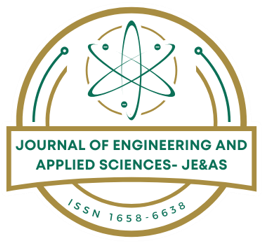| Original Research Received: 05 Mar 2024, Accepted: 31 Mar 2024, | ||||||||||||||||||||||||||||||
Numerical way out through finite volume method for Navier-Stokes type blood flow inside stenosed curved arteries Shahah Shujaa Almutairi. SUPPLEMENTARY FILES :
| ||||||||||||||||||||||||||||||
| How to Cite this Article |
| Pubmed Style Shahah Shujaa Almutairi. Numerical way out through finite volume method for Navier-Stokes type blood flow inside stenosed curved arteries. Journal of Engineering and Applied Sciences. 2024; 11(1): 63-75. doi:10.5455/jeas.2024010503 Web Style Shahah Shujaa Almutairi. Numerical way out through finite volume method for Navier-Stokes type blood flow inside stenosed curved arteries. https://jecasmu.org/?mno=193194 [Access: September 17, 2025]. doi:10.5455/jeas.2024010503 AMA (American Medical Association) Style Shahah Shujaa Almutairi. Numerical way out through finite volume method for Navier-Stokes type blood flow inside stenosed curved arteries. Journal of Engineering and Applied Sciences. 2024; 11(1): 63-75. doi:10.5455/jeas.2024010503 Vancouver/ICMJE Style Shahah Shujaa Almutairi. Numerical way out through finite volume method for Navier-Stokes type blood flow inside stenosed curved arteries. Journal of Engineering and Applied Sciences. (2024), [cited September 17, 2025]; 11(1): 63-75. doi:10.5455/jeas.2024010503 Harvard Style Shahah Shujaa Almutairi (2024) Numerical way out through finite volume method for Navier-Stokes type blood flow inside stenosed curved arteries. Journal of Engineering and Applied Sciences, 11 (1), 63-75. doi:10.5455/jeas.2024010503 Turabian Style Shahah Shujaa Almutairi. 2024. Numerical way out through finite volume method for Navier-Stokes type blood flow inside stenosed curved arteries. Journal of Engineering and Applied Sciences, 11 (1), 63-75. doi:10.5455/jeas.2024010503 Chicago Style Shahah Shujaa Almutairi. "Numerical way out through finite volume method for Navier-Stokes type blood flow inside stenosed curved arteries." Journal of Engineering and Applied Sciences 11 (2024), 63-75. doi:10.5455/jeas.2024010503 MLA (The Modern Language Association) Style Shahah Shujaa Almutairi. "Numerical way out through finite volume method for Navier-Stokes type blood flow inside stenosed curved arteries." Journal of Engineering and Applied Sciences 11.1 (2024), 63-75. Print. doi:10.5455/jeas.2024010503 APA (American Psychological Association) Style Shahah Shujaa Almutairi (2024) Numerical way out through finite volume method for Navier-Stokes type blood flow inside stenosed curved arteries. Journal of Engineering and Applied Sciences, 11 (1), 63-75. doi:10.5455/jeas.2024010503 |
 Submit Article
Submit Article - Author Login
- Reviewer Login
- About Publisher
- Peer Review Policy
- Author's Rights and Obligations
- Publication Ethics and Publication Malpractice Statement
- Conflict of Interest Policy
- Plagiarism Policy
- Protection of Research Participants (Statement On Human And Animal Rights)
- Privacy Policy
- Corrections, Retractions & Expressions of Concern
- Self-Archiving Policies
- Statement of Informed Consent
- Terms of Use
- License Information
- Copyright Information
- Statement on the Use of Generative AI
- ISSN: 1658-6638 (print)
- ISSN: 1658-7073 (electronic)

